Norman Franke – 24 August, 2023
After she saw the Colorado River and parts of the Grand Canyon from the surrounding bluffs, on a trip to the USA in 1949, Philips increasingly began to depict landscapes from a bird's eye view. Subsequent air travel to New Zealand's South Island reinforced this predilection for an elevated perspective, expansive spaces and horizons. Both her pictures of the Waikato region and those of the South Island show strong dynamics of lines and undulating coloured forms, which hint at the subterranean geological dynamics of New Zealand landscapes.
Hamilton
Margot Philips
Of This Place: Margot Philips’ Landscapes
Curated by Dr. Nadia Gush
12 May - 17 September 2022
Amongst the Waikato artists of her generation, Margot Philips’ life and artistic development were exceptional. A German-Jewish refugee, she came from the Rhine to the Waikato as a young woman to escape persecution by the National Socialists. Largely as an autodidact, and later with the help of New Zealand artist friends, in exile in Hamilton she developed her own unique style of landscape painting.
Philips was born in the industrial and riverine port city of Duisburg-Ruhrort in 1902 as the youngest of five children in a Jewish family. Her father died when she was young and in the early 1920s she lived at home to support her mother. Little is known about her early artistic socialisation.
Duisburg is an industrial city in the Ruhr area that did not have any museums and few cultural offerings when Philips grew up there (1). The nearest art academies and art museums were in Düsseldorf, Essen and Cologne. In the late 19th century, the Düsseldorf Art Academy produced a number of important landscape painters who were members of the Düsseldorfer Malerschule (Düsseldorf School of Painting) (2).
Philip’s work, however, differed radically from the romantic or realist European academy painting style before the First World War. In Essen/Hagen, in the Folkwang Museum (3), which today has one of the most important collections of modern art in Central Europe, she may have come across pictures by Cézanne and Hodler, to whom some of her images are distantly related.
After Philips left Germany in 1935, she initially went to London. She most likely saw works by traditional English landscape painters such as Constable, Turner or Thomas William Morley in London museums, but again, they do not seem to have influenced her much. Even very basic features like the lay-out of her paintings, the distribution of landscape and sky and her colour palette are very different from European conventions. Whether she had the opportunity to meet contemporary English artists such as Stanley Spencer or John Nash requires further investigation.
In 1938 she traveled to the South Pacific to follow her brother Kurt Philips and his wife Trude to New Zealand, where they had found a new home in the Waikato. When World War II began, the Philips family was classified as ‘enemy aliens’. Since her arrival in New Zealand, Philips had been working in her brother’s well-known ‘Vienna Café’, the first café that served European style coffee in Hamilton. Among the regulars she served was the Māori princess Te Puea Herangi, whom she befriended. Te Puea Herangi was a lifelong promoter of Māori culture in the Waikato region and beyond.
Initially largely self-taught, Philips started to sketch and paint the homes and gardens of Waikato friends. Later she took drawing classes at Hamilton’s Technical School and the Workers’ Educational Association and completed summer school art courses at Ardmore Teachers’ Training College. Her artistic teachers and promoters included Geoff Fairburn, Campbell Smith and Dame Janet Paul DNZM. Philips also enrolled for courses at the Auckland Art Gallery Summer School where Colin McCahon mentored and taught her, encouraging her to develop her own style, quite independent of traditional European and New Zealand landscape painting.
Philips was one of the early and formative members of the Waikato Society of Arts. The artistic adaptation of her new surroundings and artistic friendships helped her to come to terms with the hardship of exile. As Philips put it: “I knew after I had settled [in the Waikato] something inside of me was destroyed. I needed something within me to build up again.”(4)
Philips’ works, mostly medium to large oil paintings, concentrated on the visualisation of the Waikato landscape, which until then had only rarely been the subject of modern artistic representation and for which she found unique forms of chromatic and graphical expressions. As she said: “I was terribly excited by the Waikato landscape, once I was really ready to look.”(5) In addition to her oil painting skills, Philips was an accomplished draftswoman.
After she saw the Colorado River and parts of the Grand Canyon from the surrounding bluffs, on a trip to the USA in 1949, Philips increasingly began to depict landscapes from a bird’s eye view. Subsequent air travel to New Zealand’s South Island reinforced this predilection for an elevated perspective, expansive spaces and horizons. Both her pictures of the Waikato region and those of the South Island show strong dynamics of lines and undulating coloured forms, which hint at the subterranean geological dynamics of New Zealand landscapes. Frequently her paintings not only depict the visual surfaces of the land and its vegetation but also the underlying geological developments beneath landslides, erosion and lahars that have become solidified and transformed.
Some pictures seem to allow glimpses into the underground of the land, as if the surface layers, the ‘skin of the earth’, has been removed. What becomes visible are organic structures, reminiscent of internal organs or the brain.
In several of her South Island paintings the tectonic dynamics of mountains and hills appear to have been stopped for a moment of contemplation. Reminding the viewer of the slow-moving morphology of the earth’s history, her artistic perception simultaneously points to the transience of human history and destiny.
Elements of human habitation such as houses or streets are rarely incorporated in the landscapes Philips depicted, and when that is the case, they are miniatures, secondary to the vast expanses of land. In the accompanying booklet to this year’s (2023) Philips exhibition in Hamilton, the curator Dr. Nadia Gush, has pointed out that Philips “later works are more explicit in their reference to the experience of exile and sanctuary, through titles like ‘Settlement’ and ‘Homestead’, and the inclusion of small dwellings amongst pasturelands”.(6)
After initial skepticism from some conservative critics, Philip’s distinctive painting style and palette eventually became recognised by modern New Zealand art criticism. From the 1960s she was represented in a number of larger exhibitions and was able to gradually make a name for herself as a painter.
Important shows of her work included the 1962 Contemporary New Zealand Painting and Sculpture exhibition at the Auckland Art Gallery. This group exhibition also toured several major New Zealand cities and towns in 1963. Along with other New Zealand artists such as Gretchen Albrecht, Stanley Palmer, Michael Smither, Claire Jennings, Mary Le Vaillant, Valda Main, Julia van Helden and Hildegard Wieck, Margot Philips received the 1967 Manawatu Prize for Contemporary Art in a group show at the Palmerston North Art Gallery.
In 1983 the Waikato Museum organised a retrospective: The Paintings of Margot Philips. A few years later, in October 1987, there was a special exhibition for the opening of the new Waikato Museum of Art and History: Margot Philips - Her Own World. A young curator of the museum, Tim Walker, befriended Philips, interviewing her, writing up a monograph and promoting her work throughout the 1980s. A showroom at the Waikato Museum of Art and History, the Margot Philips Gallery, is named after her.
Also, based on Philips’ biography and drawing on his reminiscences of his friendship with her, the Hamilton playwright Campbell Smith wrote a play in her honour entitled This Green Land: Margot Philips - Painter. The play premiered at Hamilton’s Fuel Festival in 2002, directed by Alec Forbes. It was performed again at the Waikato Museum in July 2009 in order to celebrate the 75th anniversary of the Waikato Society of Arts which was co-founded by Philips. The play was also translated into German by Beate Jones.(7)
Under the title Of This Place: Margot Philips’ Landscapes, the Waikato Museum is showing again an extensive exhibition which provides an overview of the artist’s main oeuvre.(8) Several of the pictures on show in Hamilton are on loan from the Auckland Art Gallery, Toi o Tāmaki, or belong to the Fletcher Trust collection. The exhibition is well presented and curated. It is accompanied by a small brochure as well as floor talks about the artist and her work.
As the exhibition of Philips’ work coincides with another exhibition about Rita Angus (Rita Angus: New Zealand Modernist | He Ringatoi Hou o Aotearoa), viewers have the opportunity to compare the similarities and the differences regarding the landscape paintings of these two exceptional New Zealand woman painters. It is to be hoped that that there will be future shows of female New Zealand landscape artists, including other North Island painters and printmakers such as June Shieff, who also studied painting with Colin McCahon, or Joan Travaglia and Sybille Schlumbom.
Norman Franke
(1) That has changed significantly after the Second World War. Duisburg has now several museums, including a well stocked private owned museum of contemporary art, the Küppersmühle, an old mill turned into large exhibition space: https://museum-kueppersmuehle.de/en/
(2) https://en.wikipedia.org/wiki/D%C3%BCsseldorf_School_of_painting
(3) https://www.museum-folkwang.de/en/collection
(4) https://www.aucklandartgallery.com/explore-art-and-ideas/artist/2546/margot-philips
(5) https://www.aucklandartgallery.com/explore-art-and-ideas/artist/2546/margot-philips
(6) Waikato Museum Te Whare Taonga o Waikato, Of this Place. Margot Philips’ Landscapes, brochure to accompany the exhibition, Hamilton 2023
(7) https://de.wikipedia.org/wiki/Margot_Philips (in German)
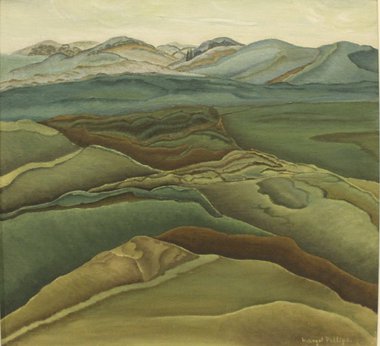
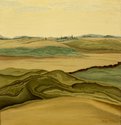
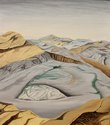
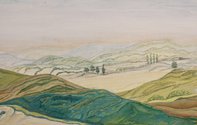
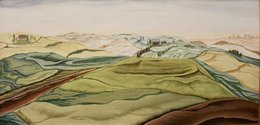
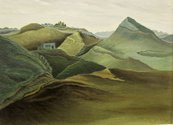

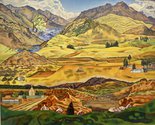
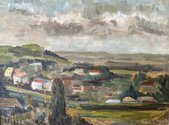
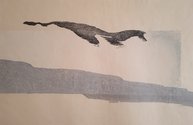
 Two Rooms presents a program of residencies and projects
Two Rooms presents a program of residencies and projects Advertising in this column
Advertising in this column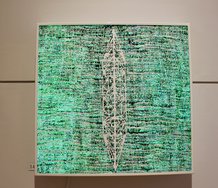
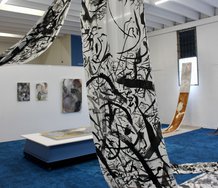
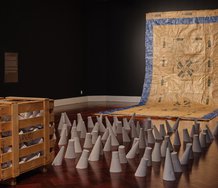
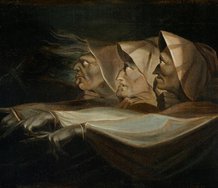
This Discussion has 0 comments.
Comment
Participate
Register to Participate.
Sign in
Sign in to an existing account.